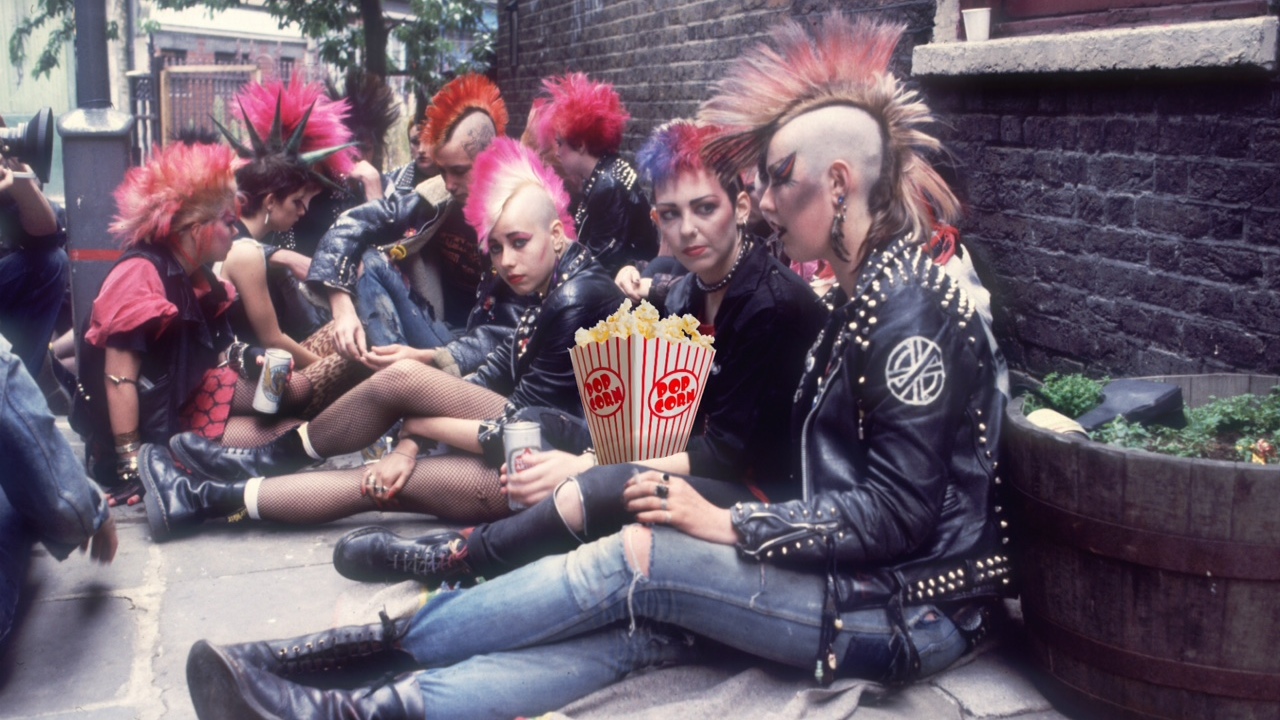Throughout 2016, London is celebrating its punk rock heritage with a series of exhibitions, gigs, talks and events looking at the impact of punk rock on music, art, fashion, culture and politics. But why should the celebrations be confined to the capital?
Over the coming weeks we’re hosting our own tribute to punk, by drawing your attention to some of the greatest punk documentaries ever made, in our weekly Punk Rock Doc Club. Entry is free and popcorn is optional, just don’t gob on your mates.
**1991: THE YEAR PUNK BROKE
**(1992)
The Year Punk Broke follows underground luminaries Sonic Youth and their support band Nirvana on tour through Europe in the summer of 1991, just before the latter’s second album Nevermind was released. It’s a compelling visual document of the two bands at their creative peak, and an enlightening illustration of their reactions to the commercial interest in alternative rock in the months before punk eventually broke into the mainstream worldwide. Dinosaur Jr., Babes In Toyland, Gumball, and the Ramones also feature, and the footage LA fanzine writer-turned-film-maker Dave Markey compiles offers a priceless snap shot of a particular time in American music.
SALAD DAYS: A DECADE OF PUNK IN WASHINGTON, DC (1980-90)
(2014)
Crawford’s film examines the early hardcore punk scene in America’s capital city, during a decade when bands such as Bad Brains, Minor Threat, Rites of Spring and Fugazi were paving the DIY path for the eruption of alternative rock post-Nevermind. It’s an engaging, educational, and entertaining reminder of the power of community and the strength of principle that characterized the punk scene during its early years.
**END OF THE CENTURY: THE STORY OF THE RAMONES
**(2003)
The definitive story of the seminal New York band, from their formation in the early ‘70s to their break up in 1996, and the deaths of three of the four original members – Tommy Ramone was still alive in 2003 when the film was released. Not only does the documentary provide a comprehensive history of the Ramones, and extensive evidence as to their impact on the development of punk rock; it’s also highly entertaining, and the ultimate tribute to the bruddas.
**AMERICAN HARDCORE
**(2006)
Paul Rachman’s documentary is based on journalist Steven Blush’s book of the same name, and addresses the birth and evolution of hardcore punk from 1978-86. He talks to promoters, journalists, scene figures and musicians such as Keith Morris (Black Flag/Circle Jerks), Ian MacKaye (Minor Threat/Fugazi) and H.R. (Bad Brains), and explores the underground social movement and its impact on the legion of hard rock and metal bands that followed in its wake. It doesn’t shy away from negatives either, as the violence and gang culture that ultimately undermined the movement come under scrutiny.
**PUNK: ATTITUDE
**(2005)
Arguably the greatest punk documentary ever made, Punk:Attitude is certainly the most all-encompassing. During the course of the film, Letts examines punk as an attitude as opposed to a genre, and a style of music characterised as anything that upsets the status quo. He takes the viewer on a journey from the early rock ‘n’ roll of Elvis and Chuck Berry, to the British Invasion and American garage rock bands of the ‘60s, via protopunk groups like The Velvet Underground, The Stooges and MC5, to the explosion of punk in the ‘70s with the Ramones, Sex Pistols, and The Clash, before going on to explore the various ways in which the music developed during the ‘80s, and beyond.
**ONE NINE NINE FOUR
**(2009)
Narrated by skateboard legend Tony Hawk, One Nine Nine Four charts the rise of So-Cal punk from early pioneers Operation Ivy and Bad Religion up to the mid ‘90s explosion with the genre’s breakthrough bands: NOFX, Pennywise, Rancid, The Offspring and, most notably, Green Day. The documentary also looks at the era’s key independent punk labels (Epitaph, Fat Wreck Chords, Nitro, Kung Fu and Hell Cat), and investigates the relationship between skateboard and surf culture and Californian punk rock music. It also addresses the impact of Nevermind, and the vacuum created by Kurt Cobain’s suicide in 1994.

